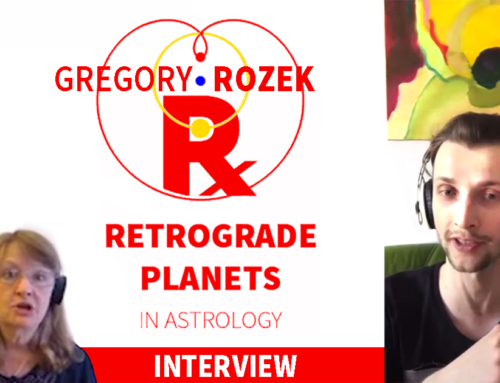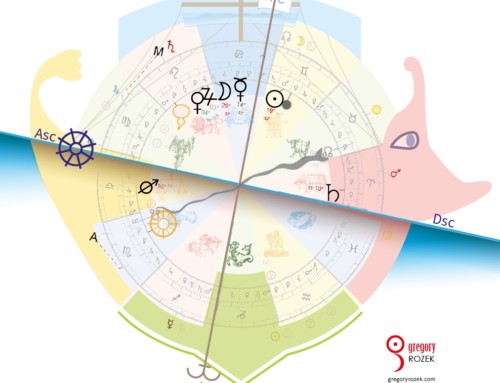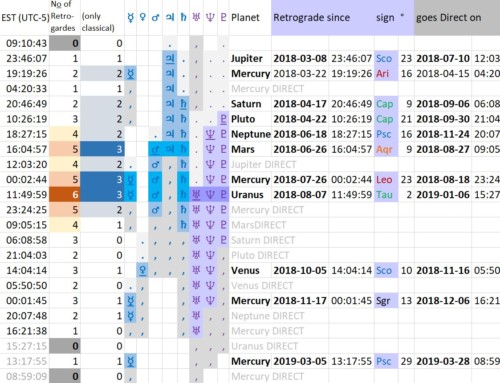The picture is a pencil drawing from 1897, depicting god Hermes taking the souls of the heroes into the depths of Hades, by the Polish modernist artist, Staniław Wyspiański The planet Mercury when I wrote the first version of this text was between the Lunar Node and Saturn in the Via Combusta – a portion of the zodiac sometimes considered as connected to the souls of the dead ones. Such occasions are a good time, to remind that Mercury did have a connection with the death. I’m referring to the Hellenistic astrology. Apart from Manilius, who wrote in Latin, the Hellenistic astrology we know centers in Greek-speaking region (mostly North Egypt – the Mecca of the astrology of these times). An back then the planets weren’t called as today. They had a names of The Stars of The Gods (so many “the’s” which might sound weird i English were a characteristic of Ancient Greek language). So this particular planet of wisdom we’re talking here, was called a Star of Ἑρμῆς (back then pronounces as Hermēs, with second “e” long). As I summarized in my last article in Polish the words of our great scholar, professor Jerzy Prokopiuk, the main feature of Ἑρμῆς as a planetary god is INTERMEDIATION. This could be used among the keywords of this intellectual star-god. One of his titles was ψυχοπομπός – psychopompos (the psychopomp) – i.e. the guide of souls, or better say the transferer or transporter of the souls. This describes his job as the one who takes the souls of deceased to the Hades – the kingdom of the God of Death. People usually are taught that it was Charon who’s job was to do that and don’t know this about Hermes. We have to remember, that Charon is a symbolic figure of this job. But everything in this and the other worlds is in care of one of the main gods. In this case it is Hermes who looks after the dead souls as the psychopomopos. He also cares about them when we sleep – he is called then the Oνειροπομπός (oneiropompos) – the guide (or the transferer) of dreams. The lesser gods Thanatos and Hypnos are assigned this two functions. But looking from the perspective of the Seven Gods of the planets only – these functions are ruled by the Star of Hermes, not by the (Star of) Kronos (who we now call Saturn). Kronos in astrology has a slightly different role compared to what is now assigned to planet Saturn in modern astrology. If we’re talking about the original form astrology we know still use in a changed and evolved form (the Mesopotamian astrology is much harder to discuss shortly here), I think it becomes obvious to everyone who deeply examines the Hellenistic astrology, that it cannot be used without the familiarity with the worldview of the Ancients. Comparing to medieval Arabic focus on exact mathematical observations, the Hellenistic astrology was less concerned with minute details of physical distances, more on the idealistic symbolic patterns of the fate (Moira) who distributes the fortune of the souls. As they were saying: the Moira is the ultimate “cosmos” (“order”), which even the gods (i.e. the planets) must surrender to. ADDENDUM Hermes is not directly connected with the death per se. He’s rather associated with intermediating with it. Hence not so much connected with the Netherworld and the afterlife, but rather visiting it. Visiting it once in the moment of death, but also repeatedly as a herald providing contact with the Netherworld. Similarly the Babylonian god Nabu (an equivalent of Greek Hermes) who was also assigned the planet Mercury, was more tremendous than the gods of death. Please note, that Mercury is the only planet that is neither day, nor night one – not connected constantly with one planetary Sect. Neither a benefic, nor malefic. And rejoices in the first topos (or how do we call that from the Middle Ages: in the first “house”) – which, for the Hellenistic Greeks, was the ONLY place (“house”) that represents the Native (the person for whom the chart is cast) himself. This place represents him as a person, as well as everything what he cannot separate from – i.e. his body, health condition, appearance and so on.
We could elaborate on this, that we can eavesdrop the planetary dialogs of the gods, we can manipulate our life and conscience to sometimes use the planets in our favor. But we cannot even try to control the Moira. She will get what she designed, the planets will bring thus upon the souls. But we can look deeper in to planetary configurations and see the blueprints the Moira sealed on them.
The Greek philosophy (especially those of the stoic origin) is in perfect accordance with this view.
Let’s look at it from the broader symbolic perspective: A human being is just such a Hermes, suspended between the two worlds (materialistic/physical and mind/spirituality)… I think it’s close to impossible to find a better generic keyword for Mercury than the intermediation.
[pronounced stah-NIECE-wuf viss-PYAN-skee], an illustration from the Homer’s “Iliad“. Colorized by myself.








Leave A Comment